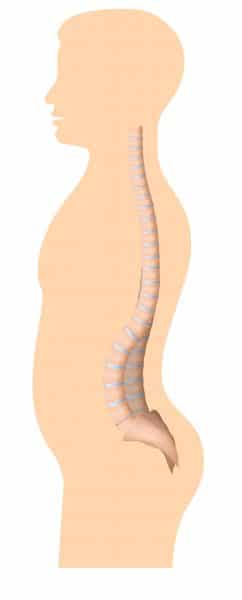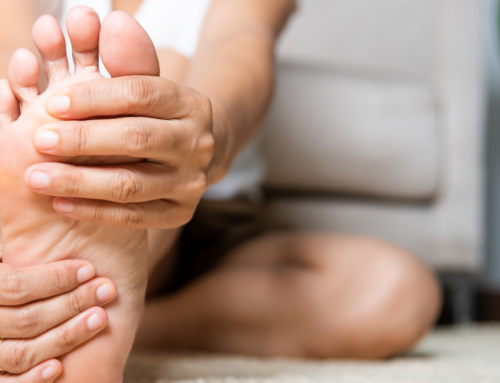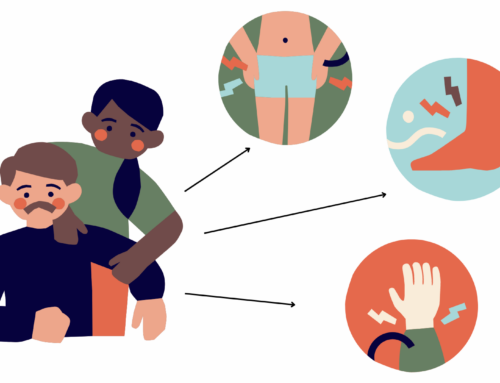Hyperlordosis and its relation to the three back curves
As shown in the image, the shape of the back contains three curves: lumbar lordosis, dorsal kyphosis and cervical lordosis. The large space shown in the lower back denotes that there is hyperlordosis. This means that the curve in the low back is greater than 20-30 degrees, which is considered normal.
Lumbar hyperlordosis is a pathological deformity of the spine. It consists in an excessive curvature of the spine in the lower back. Hyperlordosis creates a characteristic C-shaped curve in the lumbar region.
Symptoms of hyperlordosis

What causes it?
There are many factors that can cause or contribute to hyperlordosis, it can have a congenital origin or it can be acquired by the lifestyle you lead.
Poor posture: How many time do we spend in sitting either because of work or because we are convalescing? Therefore, when trying to stabilize and support the spine, the muscles surrounding the lumbar may contract and push the spine outward, which can cause an increase in the curvature of the spine.
Obesity: The presence of excess fat in both the abdomen and buttocks puts additional pressure on the lower back, which can cause the lumbar spine to bend into a C-shape.
Lack of exercise: Sedentary lifestyles and lack of exercise, besides increasing the risk of obesity, can weaken the core muscles around the trunk and pelvis. This results in not being able to hold the spine straight and all this eventually leads to excessive spinal curvature.
Spinal conditions: If you have spinal problems such as kyphosis, discitis or spondylolisthesis it is very likely that you may suffer from lumbar hyperlordosis as a result.
Curious facts about the condition

As shown in the image, the shape of the back contains three curves: lumbar lordosis, dorsal kyphosis and cervical lordosis. The large space shown in the lower back denotes that there is hyperlordosis. This means that the curve in the low back is greater than 20-30 degrees, which is considered normal.
Lumbar hyperlordosis is a pathological deformity of the spine. It consists in an excessive curvature of the spine in the lower back. Hyperlordosis creates a characteristic C-shaped curve in the lumbar region.
Symptoms of hyperlordosis

What causes it?
There are many factors that can cause or contribute to hyperlordosis, it can have a congenital origin or it can be acquired by the lifestyle you lead.
Poor posture: How many time do we spend in sitting either because of work or because we are convalescing? Therefore, when trying to stabilize and support the spine, the muscles surrounding the lumbar may contract and push the spine outward, which can cause an increase in the curvature of the spine.
Obesity: The presence of excess fat in both the abdomen and buttocks puts additional pressure on the lower back, which can cause the lumbar spine to bend into a C-shape.
Lack of exercise: Sedentary lifestyles and lack of exercise, besides increasing the risk of obesity, can weaken the core muscles around the trunk and pelvis. This results in not being able to hold the spine straight and all this eventually leads to excessive spinal curvature.
Spinal conditions: If you have spinal problems such as kyphosis, discitis or spondylolisthesis it is very likely that you may suffer from lumbar hyperlordosis as a result.
Curious facts about the condition






